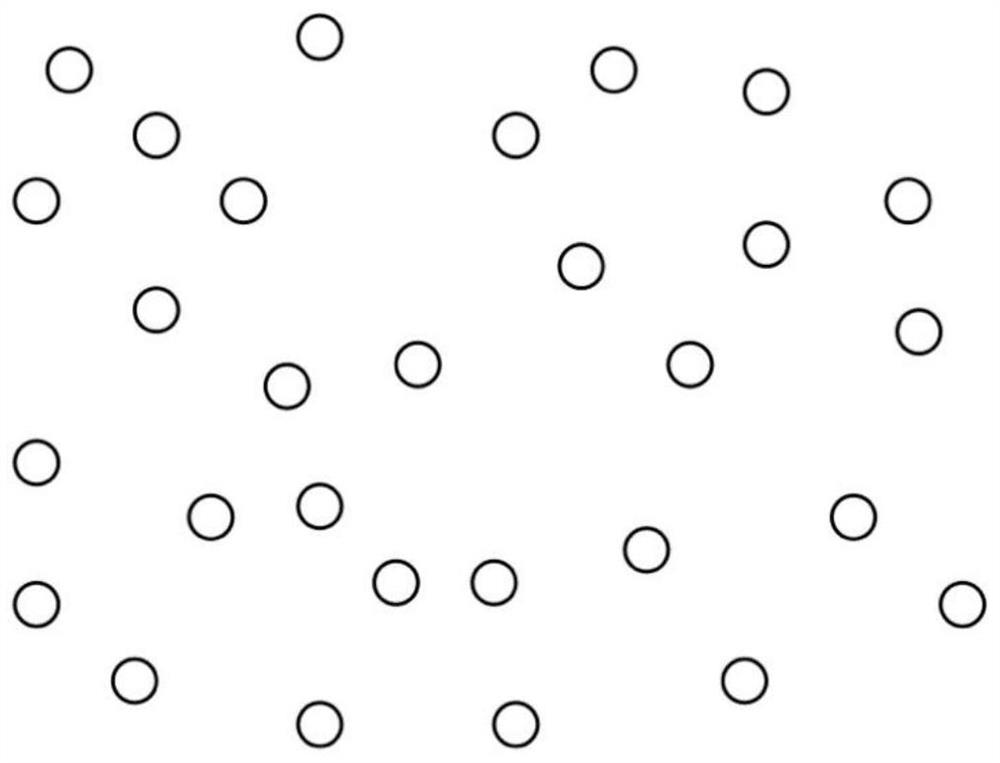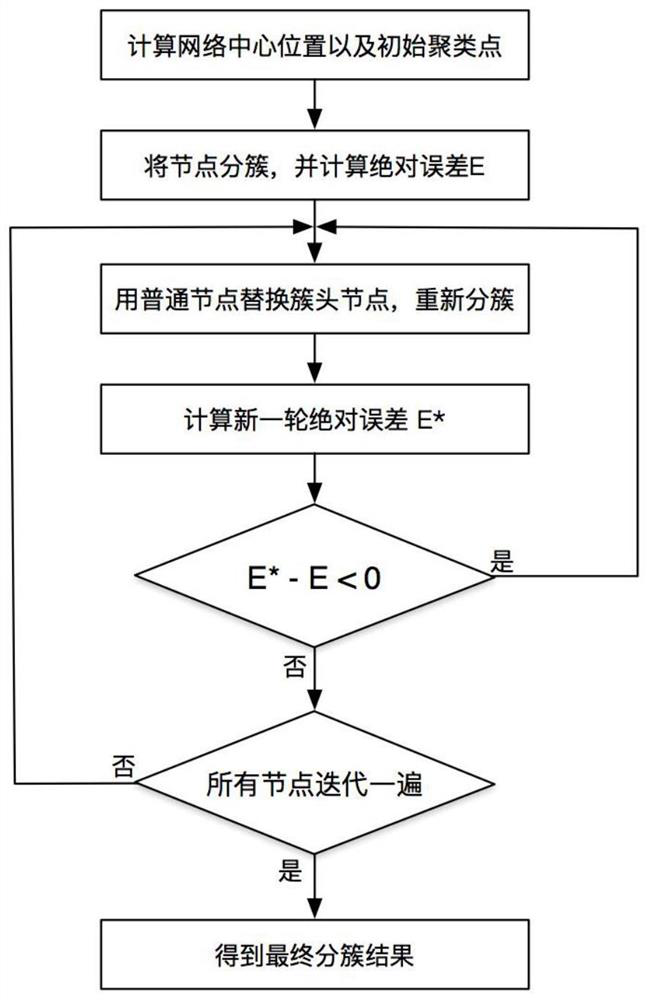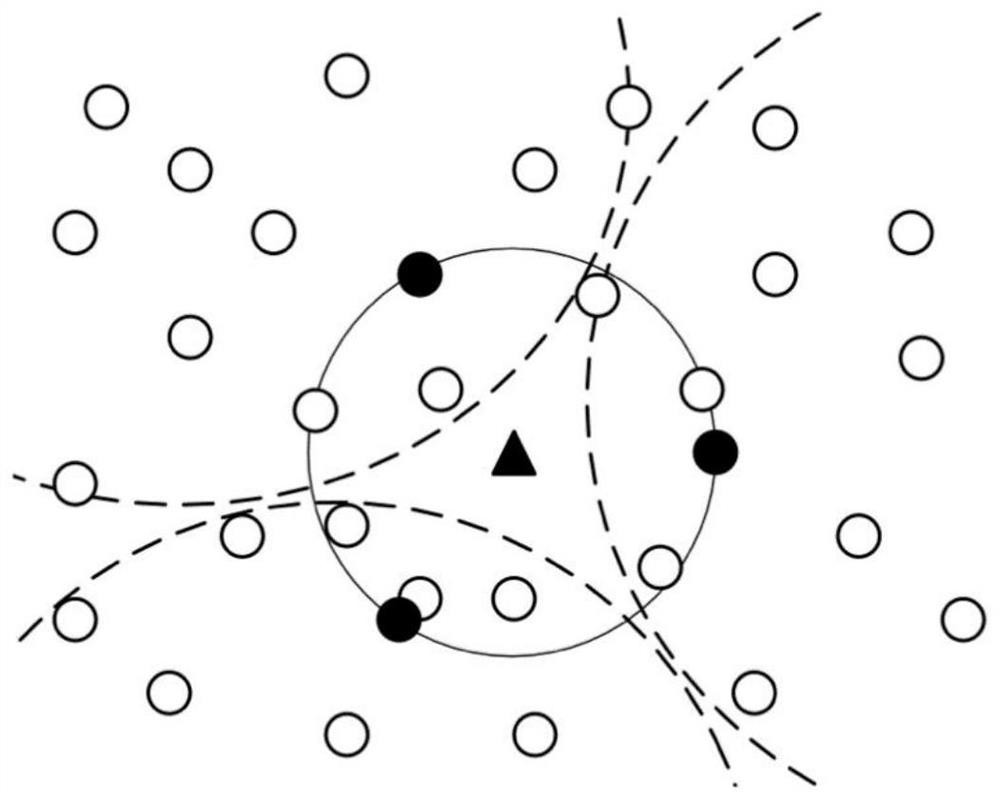A clustering method for wireless sensor networks based on k-medoids
A technology of wireless sensors and sensor nodes, applied in network topology, wireless communication, advanced technology and other directions, can solve the problems of high energy consumption of sensors and short survival time of wireless sensor networks, so as to prolong the survival time, avoid the problem of clustering imbalance, The effect of avoiding outliers
- Summary
- Abstract
- Description
- Claims
- Application Information
AI Technical Summary
Problems solved by technology
Method used
Image
Examples
Embodiment Construction
[0018] The invention discloses a K-medoids-based wireless sensor network clustering method, combining figure 2 As shown, the specific steps are:
[0019] Step 1. According to the structure of the wireless sensor network, the coordinates of the center position of the wireless sensor network and the coordinates of the initial clustering points are obtained; this step can effectively reduce the number of iterations of the entire scheme and reduce the initialization time.
[0020] Such as figure 1 Shown is a schematic diagram of a wireless sensor network structure, the circles in the figure represent sensor nodes, and several sensor nodes are distributed in an area.
[0021] In a further embodiment, the calculation formula of the wireless sensor network center position coordinate O is:
[0022]
[0023] In the formula, n is the number of sensor nodes, X i is the location coordinate of sensor node i. Accumulate the abscissa and ordinate of each sensor node position and divi...
PUM
 Login to View More
Login to View More Abstract
Description
Claims
Application Information
 Login to View More
Login to View More - R&D
- Intellectual Property
- Life Sciences
- Materials
- Tech Scout
- Unparalleled Data Quality
- Higher Quality Content
- 60% Fewer Hallucinations
Browse by: Latest US Patents, China's latest patents, Technical Efficacy Thesaurus, Application Domain, Technology Topic, Popular Technical Reports.
© 2025 PatSnap. All rights reserved.Legal|Privacy policy|Modern Slavery Act Transparency Statement|Sitemap|About US| Contact US: help@patsnap.com



